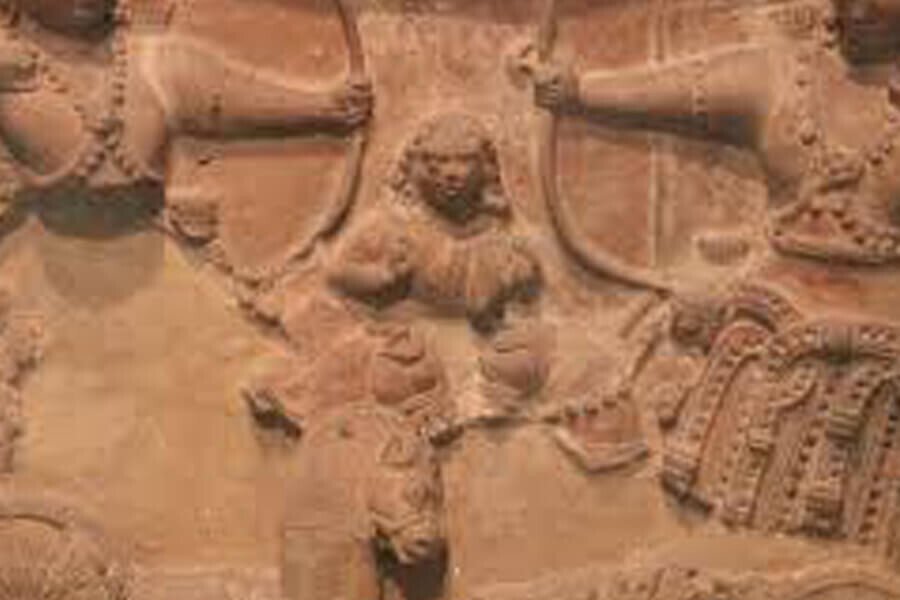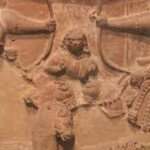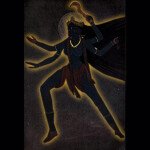Another of these great prejudices with which Indians had to battle for centuries, is that whatever the spiritual, cultural, artistic, even social greatness of India, it always was disunited, except under Ashoka and some of the Mughal emperors — just a bunch of barbarian rulers, constantly fighting themselves — and that it was thanks to the Mughals and the British, that India was finally politically united. This is doing again a grave injustice to India.
The Vedic sages had devised a monarchical system, whereby the king was at the top, but could be constitutionally challenged. In fact, it even allowed for men’s inclination to war, but made sure that it never went beyond a certain stage, for only professional armies fought and the majority of the population remained untouched. Indeed, at no time in ancient India, were there great fratricidal wars, like those between the British and the French, or even the Protestants and the Catholics within France itself. Moreover, the system allowed for a great federalism: for instance, a long time after the Vedic fathers, the real power lay in the village panchayats.
Sri Aurobindo refutes the charge (which Basham levels), that India has always shown an incompetence for any free and sound political organisation and has been constantly a divided nation. “There always was a strong democratic element in pre-Muslim India, which certainly showed a certain similarity with Western parliamentary forms, but these institutions were Indian”.
The early Indian system was that of the clan, or tribal system, founded upon the equality of all members of the tribe. In the same way, the village community had its own assembly, the “visah”, with only the king above this democratic body. The priests, who acted as the sacrifice makers and were poets, occultists and yogis, had no other occupation in life and their positions were thus not hereditary but depended on their inner abilities. And it was the same thing with warriors, merchants, or lower class people. “Even when these classes became hereditary”, remarks Sri Aurobindo, “from the king downwards to the Shudra, the predominance, say of the Brahmins, did not result in a theocracy, because the Brahmins in spite of their ever-increasing and finally predominant authority, did not and could not usurp in India the political power”. (Foundations of Indian Culture p. 326). The Rishi had a peculiar place, he was the sage, born from any caste, who was often counsellor to the King, of whom he was also the religious preceptor.
Later it seems that it was the Republican form of government which took over many parts of India. In some cases these “Republics” appear to have been governed by a democratic assembly and some came out of a revolution; in other cases, they seem to have had an oligarchic senate. But they enjoyed throughout India a solid reputation for the excellence of their civil administration and the redoubtable efficiency of their armies. It is to be noted that these Indian Republics existed long before the Greek ones, although the world credits the Greeks with having created democracy; but as usual History is recorded through the prism of the Western world and is very selective indeed. One should also add that none of these Indian republics developed an aggressive colonising spirit and that they were content to defend themselves and forge alliances amongst them.
But after the invasion of Alexander’s armies, India felt for the first time the need to unify its forces. Thus the monarchical system was raised-up again; but once more, there was no despotism as happened in Europe until the French revolution: the Indian king did enjoy supreme power, but he was first the representative and guardian of Dharma, the sacred law; his power was not personal and there were safeguards against abuses so that he could be removed. Furthermore, although the king was a Hindu, Hinduism was never the state religion, and each cult enjoyed its liberties. Thus could the Jews and the Parsis and the Jains and the Buddhists, and even the early Christians (who abused that freedom), practise their faith in peace. Which religion in the world can boast of such tolerance?
As in a human being, a nation has a soul, which is eternal; and if this soul, this idea-force, is strong enough, it will keep evolving new forms to reincarnate itself constantly. “And a people”, maintains Sri Aurobindo, “who learn consciously to think always in terms of Dharma, of the eternal truth behind man, and learn to look beyond transient appearances, such as the people of India, always survives.” (Foundations of Indian Culture, p.334).
And in truth, Indians always regarded life as a manifestation of Self and the master idea that governed life, culture and social ideals of India has been the seeking of man for his inner self — everything was organized around this single goal. Thus, Indian politics, although very complex, always allowed a communal freedom for self-determination. In the last stages of the pre-Muslim period, the summit of the political structure was occupied by three governing bodies: the King in his Ministerial Council, the Metropolitan Assembly and the General Assembly of the kingdom. The members of the Ministerial Council were drawn from all castes. Indeed the whole Indian system was founded upon a close participation of all the classes; even the Shudra had his share in the civic life. Thus the Council had a fixed number of Brahmin, Kshatrya, Vaishya and Shudra representatives, with the Vaishya having a greater preponderance. And in turn, each town, each village, had its own Metropolitan Civic Assembly allowing a great amount of autonomy. Even the great Ashoka was defeated in his power tussle with his Council and he had practically to abdicate.
It is this system which allowed India to flower in an unprecedented way, to excel perhaps as no other nation had done before her, in all fields, be it literature, architecture, sculpture, or painting and develop great civilizations, one upon the other, each one more sumptuous, more grandiose, more glittering than the previous one.
Printed with permission of the author (April 2020)











